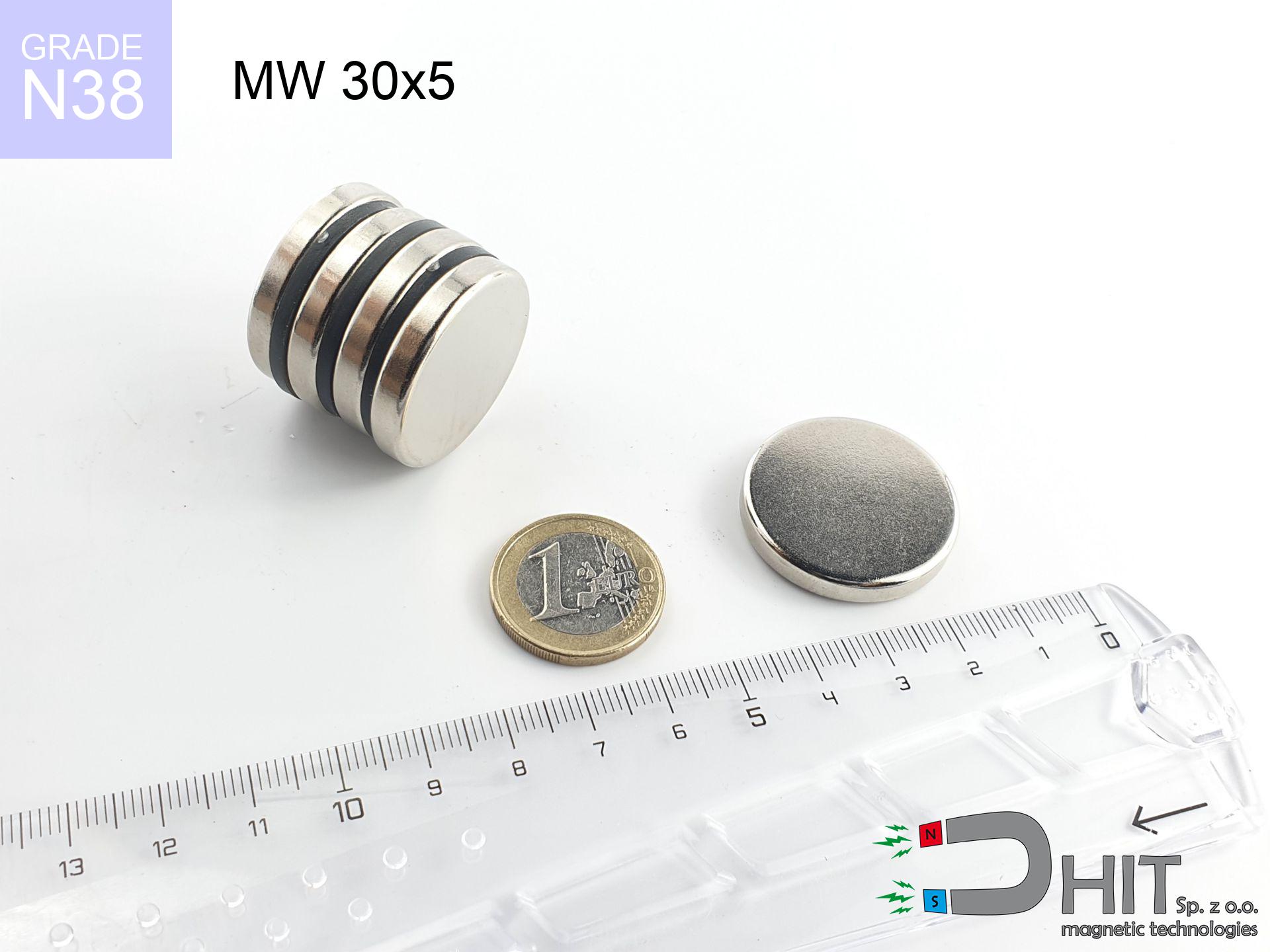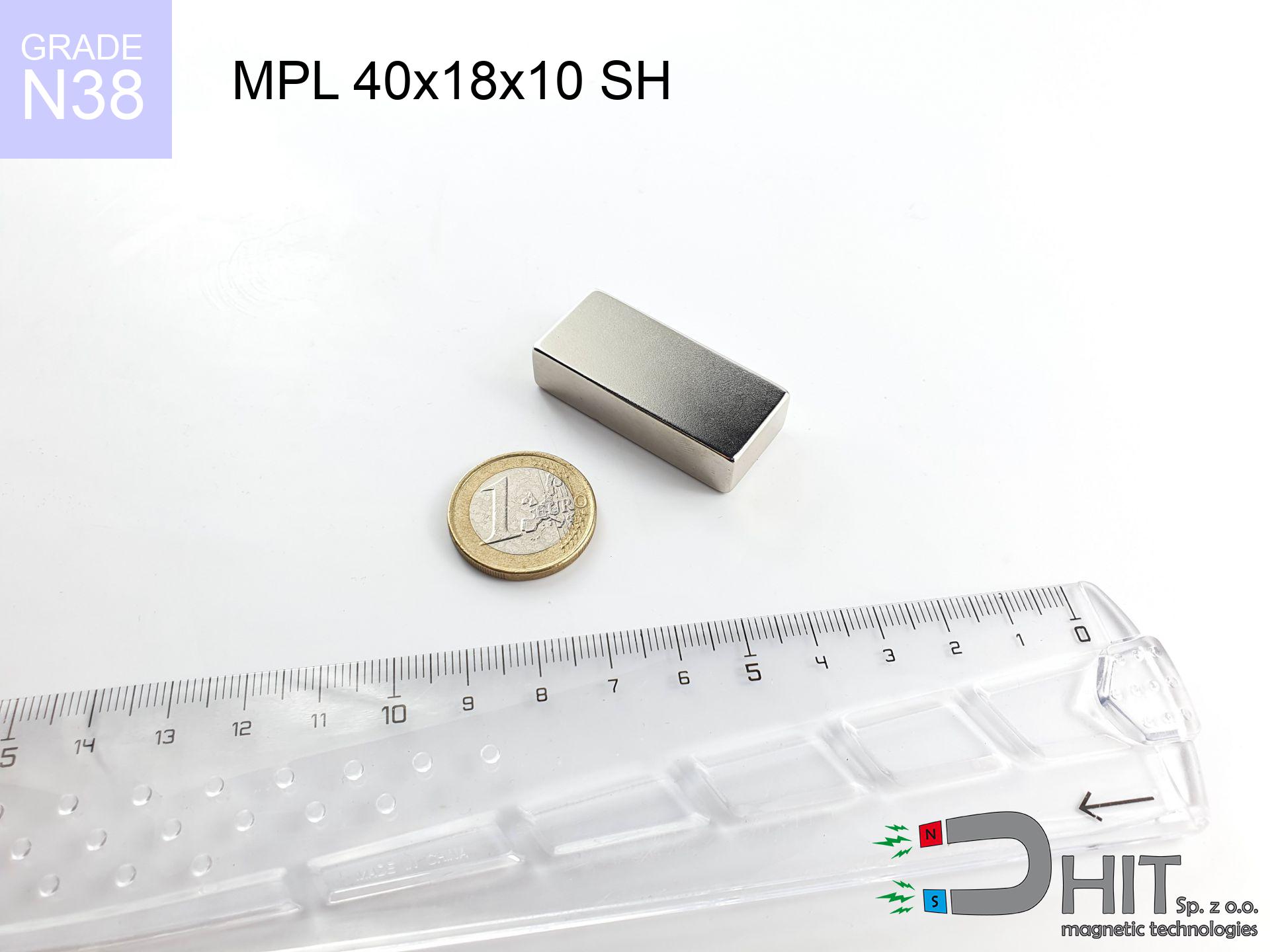CM PML-10 / N45 - magnetic gripper
magnetic gripper
Catalog no 100478
GTIN/EAN: 5906301812647
Weight
33300 g
Magnetization Direction
↑ axial
Load capacity
1000.00 kg / 9806.65 N
2019.05 ZŁ with VAT / pcs + price for transport
1641.50 ZŁ net + 23% VAT / pcs
bulk discounts:
Need more?Want to talk magnets?
Contact us by phone
+48 888 99 98 98
alternatively send us a note via
inquiry form
the contact page.
Force and shape of magnets can be calculated using our
our magnetic calculator.
Same-day shipping for orders placed before 14:00.
CM PML-10 / N45 - magnetic gripper
Specification / characteristics CM PML-10 / N45 - magnetic gripper
| properties | values |
|---|---|
| Cat. no. | 100478 |
| GTIN/EAN | 5906301812647 |
| Production/Distribution | Dhit sp. z o.o. |
| Country of origin | Poland / China / Germany |
| Customs code | 85059029 |
| Weight | 33300 g |
| Magnetization Direction | ↑ axial |
| Load capacity ~ ? | 1000.00 kg / 9806.65 N |
| Manufacturing Tolerance | ±1 mm |
Magnetic properties of material N45
| properties | values | units |
|---|---|---|
| remenance Br [min. - max.] ? | 13.2-13.7 | kGs |
| remenance Br [min. - max.] ? | 1320-1370 | mT |
| coercivity bHc ? | 10.8-12.5 | kOe |
| coercivity bHc ? | 860-995 | kA/m |
| actual internal force iHc | ≥ 12 | kOe |
| actual internal force iHc | ≥ 955 | kA/m |
| energy density [min. - max.] ? | 43-45 | BH max MGOe |
| energy density [min. - max.] ? | 342-358 | BH max KJ/m |
| max. temperature ? | ≤ 80 | °C |
Physical properties of sintered neodymium magnets Nd2Fe14B at 20°C
| properties | values | units |
|---|---|---|
| Vickers hardness | ≥550 | Hv |
| Density | ≥7.4 | g/cm3 |
| Curie Temperature TC | 312 - 380 | °C |
| Curie Temperature TF | 593 - 716 | °F |
| Specific resistance | 150 | μΩ⋅cm |
| Bending strength | 250 | MPa |
| Compressive strength | 1000~1100 | MPa |
| Thermal expansion parallel (∥) to orientation (M) | (3-4) x 10-6 | °C-1 |
| Thermal expansion perpendicular (⊥) to orientation (M) | -(1-3) x 10-6 | °C-1 |
| Young's modulus | 1.7 x 104 | kg/mm² |
Chemical composition
| iron (Fe) | 64% – 68% |
| neodymium (Nd) | 29% – 32% |
| boron (B) | 1.1% – 1.2% |
| dysprosium (Dy) | 0.5% – 2.0% |
| coating (Ni-Cu-Ni) | < 0.05% |
Sustainability
| recyclability (EoL) | 100% |
| recycled raw materials | ~10% (pre-cons) |
| carbon footprint | low / zredukowany |
| waste code (EWC) | 16 02 16 |
Other products
Advantages and disadvantages of Nd2Fe14B magnets.
Pros
- They do not lose magnetism, even over nearly ten years – the reduction in power is only ~1% (based on measurements),
- They are extremely resistant to demagnetization induced by external disturbances,
- Thanks to the metallic finish, the plating of nickel, gold, or silver gives an visually attractive appearance,
- Magnetic induction on the working layer of the magnet turns out to be strong,
- Thanks to resistance to high temperature, they are able to function (depending on the shape) even at temperatures up to 230°C and higher...
- Thanks to modularity in shaping and the ability to modify to unusual requirements,
- Huge importance in modern technologies – they are utilized in mass storage devices, electromotive mechanisms, medical devices, as well as complex engineering applications.
- Compactness – despite small sizes they generate large force, making them ideal for precision applications
Weaknesses
- To avoid cracks under impact, we suggest using special steel housings. Such a solution protects the magnet and simultaneously increases its durability.
- When exposed to high temperature, neodymium magnets experience a drop in force. Often, when the temperature exceeds 80°C, their strength decreases (depending on the size, as well as shape of the magnet). For those who need magnets for extreme conditions, we offer [AH] versions withstanding up to 230°C
- They rust in a humid environment - during use outdoors we suggest using waterproof magnets e.g. in rubber, plastic
- Due to limitations in producing nuts and complex shapes in magnets, we recommend using cover - magnetic mechanism.
- Potential hazard to health – tiny shards of magnets pose a threat, when accidentally swallowed, which gains importance in the context of child safety. Additionally, small components of these magnets can disrupt the diagnostic process medical when they are in the body.
- High unit price – neodymium magnets cost more than other types of magnets (e.g. ferrite), which increases costs of application in large quantities
Pull force analysis
Maximum magnetic pulling force – what contributes to it?
- using a plate made of mild steel, serving as a circuit closing element
- with a thickness minimum 10 mm
- characterized by lack of roughness
- with total lack of distance (no impurities)
- for force applied at a right angle (in the magnet axis)
- at temperature room level
Determinants of lifting force in real conditions
- Air gap (betwixt the magnet and the plate), since even a tiny clearance (e.g. 0.5 mm) can cause a decrease in lifting capacity by up to 50% (this also applies to paint, corrosion or dirt).
- Pull-off angle – remember that the magnet holds strongest perpendicularly. Under shear forces, the capacity drops drastically, often to levels of 20-30% of the nominal value.
- Plate thickness – too thin steel does not accept the full field, causing part of the flux to be wasted to the other side.
- Chemical composition of the base – mild steel attracts best. Alloy admixtures lower magnetic properties and holding force.
- Plate texture – ground elements ensure maximum contact, which improves field saturation. Rough surfaces reduce efficiency.
- Thermal factor – hot environment reduces pulling force. Too high temperature can permanently damage the magnet.
Lifting capacity testing was conducted on plates with a smooth surface of optimal thickness, under perpendicular forces, in contrast under parallel forces the load capacity is reduced by as much as 5 times. Additionally, even a small distance between the magnet’s surface and the plate decreases the load capacity.
Dust explosion hazard
Dust created during grinding of magnets is self-igniting. Avoid drilling into magnets without proper cooling and knowledge.
GPS Danger
Remember: rare earth magnets generate a field that interferes with sensitive sensors. Keep a safe distance from your mobile, tablet, and navigation systems.
ICD Warning
For implant holders: Powerful magnets affect medical devices. Keep minimum 30 cm distance or request help to work with the magnets.
Safe distance
Intense magnetic fields can corrupt files on payment cards, hard drives, and other magnetic media. Stay away of min. 10 cm.
Hand protection
Big blocks can break fingers in a fraction of a second. Do not place your hand betwixt two attracting surfaces.
Protective goggles
Beware of splinters. Magnets can explode upon uncontrolled impact, ejecting shards into the air. Wear goggles.
Thermal limits
Control the heat. Heating the magnet to high heat will destroy its magnetic structure and pulling force.
Skin irritation risks
Studies show that the nickel plating (the usual finish) is a potent allergen. For allergy sufferers, avoid direct skin contact or select versions in plastic housing.
Product not for children
Absolutely keep magnets out of reach of children. Choking hazard is significant, and the consequences of magnets connecting inside the body are fatal.
Immense force
Before use, check safety instructions. Sudden snapping can destroy the magnet or hurt your hand. Think ahead.








